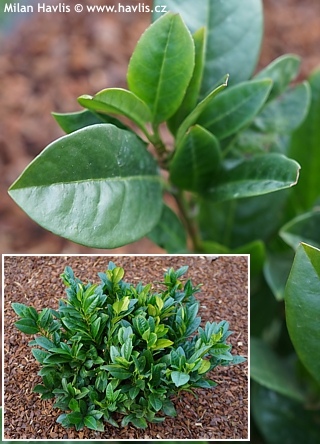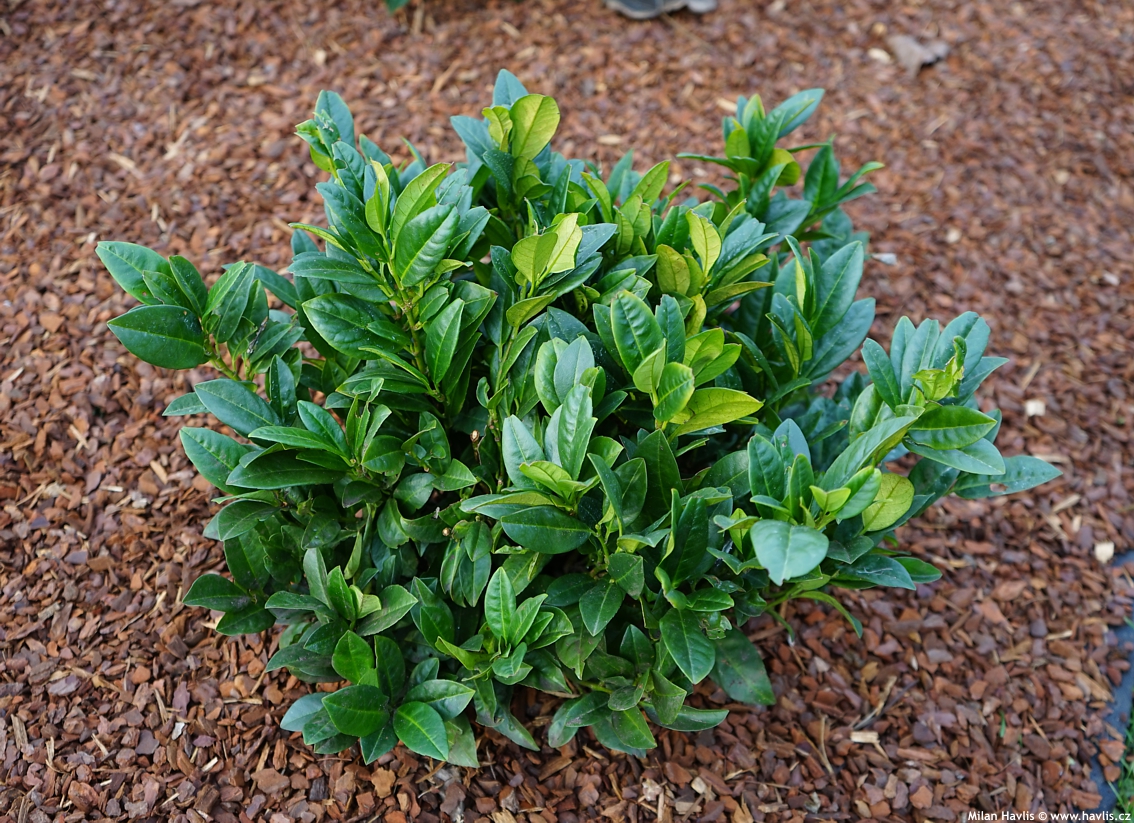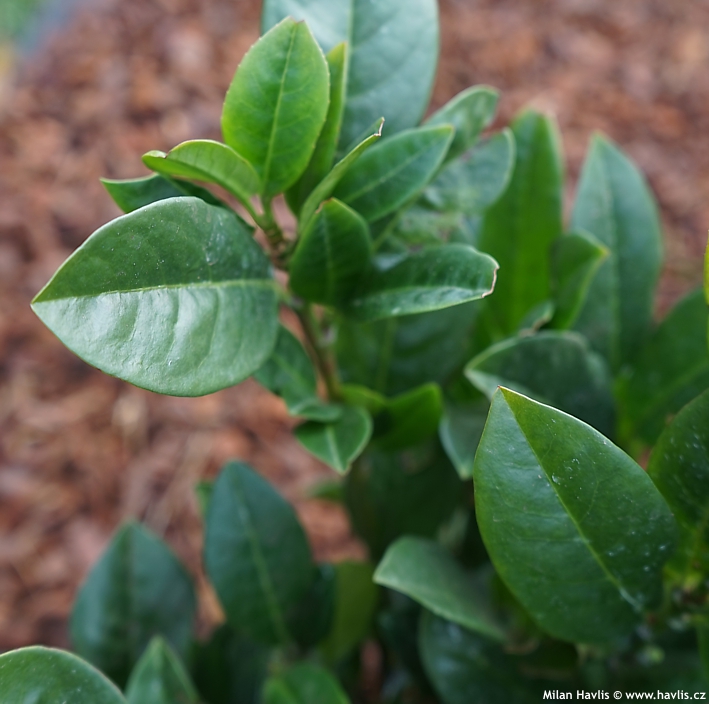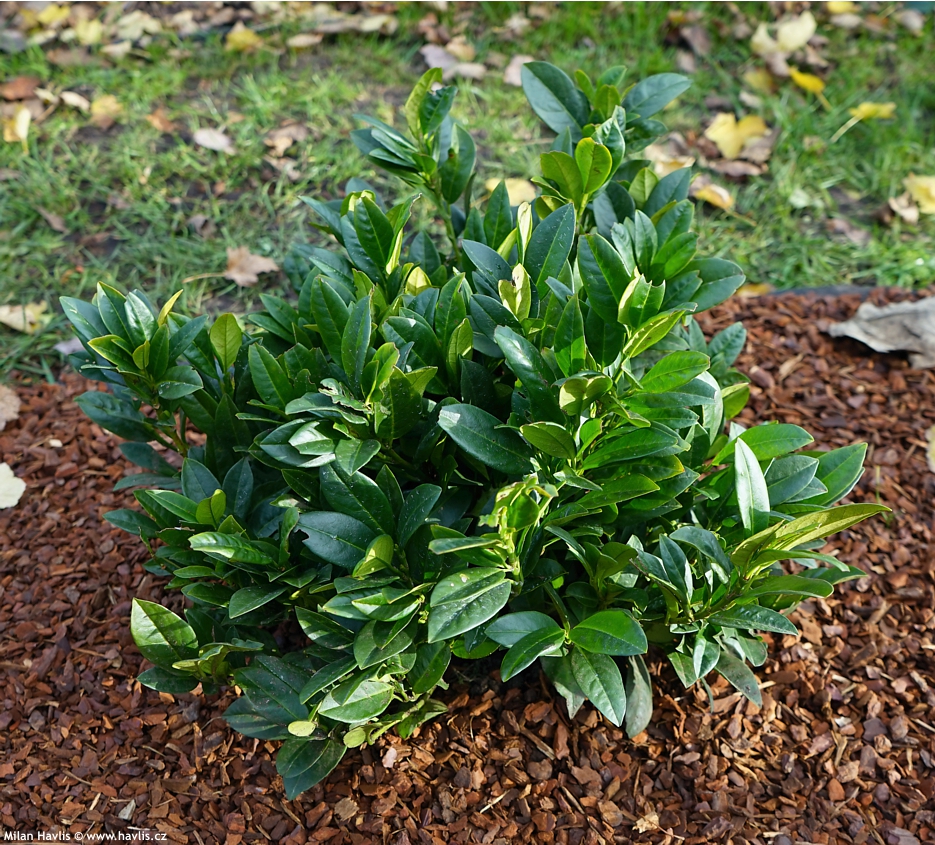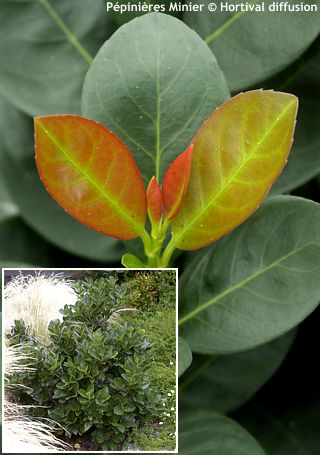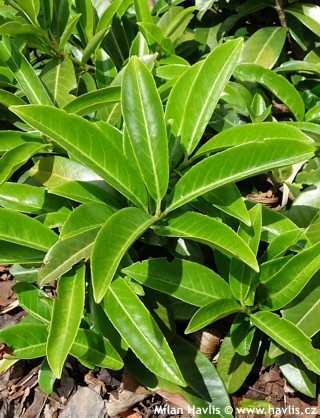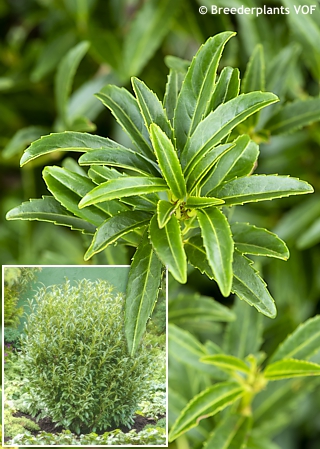Prunus laurocerasus 'PIRI' Cherry laurel, common laurel, English laurel
Prunus
The genus Prunus is quite extensive and, above all, remarkably diverse – it includes around 350 different species, some of which you would hardly place in the same group at first glance. Its representatives occur from Asia through Europe and North Africa to North America. The genus comprises trees and shrubs valued mainly for their abundant and attractive flowering, as well as species with delicious edible fruits, and in this particular case an evergreen species whose persistent foliage becomes especially important during the dormant season, when most other woody plants are leafless. This species is known as cherry laurel (Prunus laurocerasus) and originates from regions around the Black Sea, the Caucasus, and northern Turkey, where it grows in submontane forests and on moist, shaded slopes. Its glossy, leathery leaves resemble those of true laurel, and this similarity that gave rise to its name – lauro‑cerasus, meaning “laurel cherry.” It reached Europe as early as the 16th century and, thanks to its frost hardiness, is today one of the most important evergreen woody plants even in Central European climate.
Cherry laurel was scientifically described in 1753 by Carl Linnaeus in his famous work Species Plantarum, where it received its current botanical name Prunus laurocerasus. Its cultivation and use, however, are documented already in antiquity – it is mentioned by Theophrastus, Dioscorides, and Pliny, who described it as a laurel‑like plant and drew attention to its unusual properties. The leaves contain cyanogenic glycosides, primarily prunasin and, to a lesser extent, amygdalin, from which hydrocyanic acid was released when properly processed. These substances formed the basis of a distillate known as aqua laurocerasi, which was used with due medical caution as a sedative.
Dr. Jozsa Miklos is a Hungarian breeder who spent a lot of time breeding beautiful and hardy cherry laurels and we are happy to be able to have trialled them here in Czechia, and now we introduce them one by one to our customers, too. Piri is a dwarf cherry laurel variety of his with dense and almost rounded habit. Its evergreen leaves are leathery, broadly elliptic to ovate, dark green, and glossy. The plant grows slowly, only some 5-10 cm per year, and is suitable for small beds as well as containers. In April or May appear compound inflorescences made of small, white, fragrant flowers. They are followed by black berries which, as recent studies confirmed, are not poisonous. Only seeds from unripe fruit if properly chewed may cause discomfort since they contain the same toxin as bitter almonds (source: Plants For A Future - www.pfaf.org). If you want to prune it, do so in mid spring before new leaves emerge or in mid summer.
Cherry laurels require moist but well‑drained soil, ideally acidic to neutral and rich in nutrients. They do not tolerate compacted, heavy clay, muddy, or permanently waterlogged soils. They are sensitive to lime in the soil, which most commonly manifests as chlorosis – the leaves lose their green colour and the vein pattern becomes pronounced. Similar symptoms may also occur in cases of nutrient deficiency. In both situations, the application of magnesium sulphate (Epsom salt), organic fertilisers, or adjustment of soil pH towards a more acidic reaction is beneficial. They tolerate pruning of any intensity and respond particularly well to rejuvenation pruning into old wood, from which they readily regenerate. The best time for pruning is in spring after the risk of frost has passed; shaping cuts are carried out in mid‑summer. Because they retain their leaves year‑round – even in winter – and continuously transpire water, they require an adequate supply of moisture. Until a sufficiently deep root system develops, it is advisable to water them at least once a month during dry winters to prevent dehydration and subsequent leaf scorch caused by strong winter sun. To retain moisture and protect against temperature fluctuations, year‑round mulching is strongly recommended. It is hardy to at least -27 °C (USDA zone 5b) without any injury and suitable for outdoor pots.
Last update 27-12-2020; 22-12-2025

































